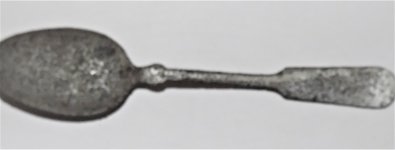Warrington
Jr. Member
- Apr 18, 2021
- 28
- 33
- Primary Interest:
- All Treasure Hunting
Having quite a time digging in the backyard of my colonial era house. Not much colonial, but so far 3 pounds of nails, and 8 pounds of relics (farm implements) out of a 10' x 10' area. In any case, today I uncovered an iron spoon. The "style" would be called "colonial" today, but I doubt that age. It is about 8.5 inches long and does not show any sign of having ever been plated. I bead blasted it, hoping to find a maker's mark. There might appear to be a mark, on close inspection that is just fortuitous rust pits. With the exception of a spark plug, everything found around it appears to to be mid, to late, 19th century. I would not say there are any signs of forging.











